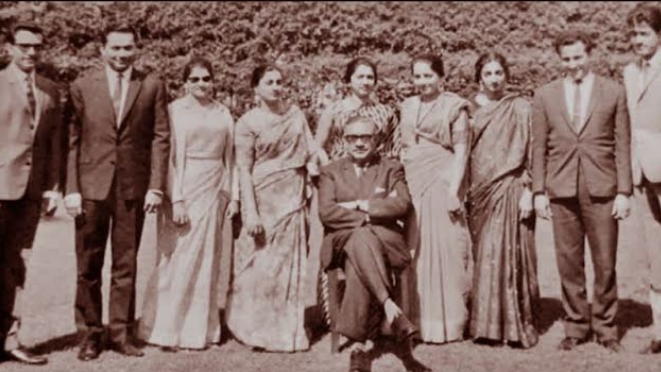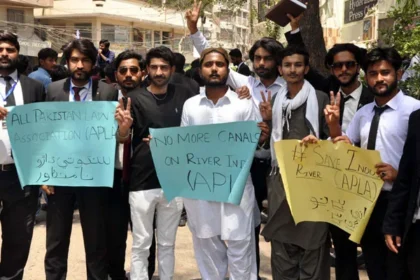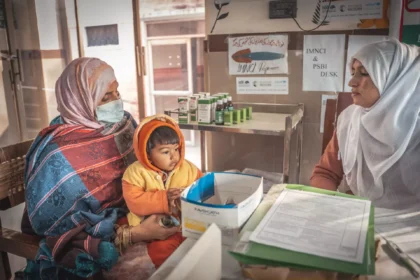Memon culture is one of the most profound yet understudied cultures of Pakistan. Most people in Pakistan perceive Memons as a caste or a family name rather than recognizing them as a separate cultural and linguistic identity. This article aims to study the historical origins, culture, and traditions of the Memon community to draw a better understanding.
History and Origin
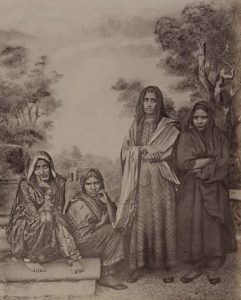
The term “Memon” is believed to be derived from the Arabic word “Mumin,” meaning “faithful.”
The Memon community traces its origins to Thatta, Sindh, where its ancestors were Sindhi Hindu Lohanas, a prominent merchant caste. In 1424, under the guidance of the Islamic scholar and saint Syed Yusufuddin Qadri, the Lohanas embraced Islam, marking the birth of the Memon community. Following their conversion, the Memons migrated to Kutch and later to Gujarat to escape socio-political unrest. Over time, they established themselves as a thriving mercantile community. The Memons have historically been associated with trade and commerce, and their contributions in business are acknowledged worldwide.
People of this community have settled in major metropolitans all over the world. Wherever they reside, if there is a significant Memon population, the Memons form Jamaats. These Jamaats are elected bodies that look after the welfare of the community.
Global Presence
Today, the Memon community is scattered across the globe. The Memon community has a global population of approximately 1.8 million, with 700,000 residing in Pakistan, 900,000 in India, and the remaining 200,000 scattered in other countries.
In Pakistan, cities like Karachi, Sukkur, and Hyderabad have vibrant Memon communities. In India, Memons are concentrated in Gujarat and Mumbai, particularly in the historic area known as Memonwada. Globally, organizations like the World Memon Organisation (WMO) and the International Memon Organisation (IMO) play a crucial role in uniting Memons and promoting their cultural and social development.
Sub-groups
The Memons are divided into various sub-groups, namely Kathiawari Memons, Gujarati Memons, and Sindhi Memons. The Kathiawari Memons originate from the Kathiawar region in Gujarat, India, known for their distinct dialect and traditions. Many Kathiawari Memons migrated to Pakistan after Partition, particularly to Karachi, where they integrated into the business community while maintaining their unique heritage. The Sindhi Memons are primarily from Sindh, Pakistan, where they have been an integral part of the local economy, particularly in trade and commerce. Their culture blends Sindhi traditions with Memon customs, and they speak Sindhi alongside their native Memon dialect. Gujarati Memons, on the other hand, trace their roots to Gujarat, India, and are known for their entrepreneurial spirit. They have a rich history of involvement in trade, with many settling in major cities like Karachi. Gujarati Memons often maintain close ties to their cultural roots, with their language and customs shaped by the broader Gujarati-speaking population. Despite regional differences, all three communities share a strong sense of Memon identity, marked by their focus on education, business, and philanthropy.
Language
The language is called Memoni Boli or Meethi Boli. It is a unique blend of Sindhi, Kutchi, and Gujarati vocabularies. This language has passed from generation to generation verbally and has no script. Consequently, it has no literary tradition. Memoni Boli has several dialects and accents due to the influence of the other languages spoken in the areas of settlement. However, lately, there have been attempts to write using the Urdu and Gujarati scripts. With the increasing popularity of social media and text messaging, Memoni Boli has started being written in the Roman script as well.
Traditions and Practices
Marriage holds a central place in Memon culture. Memons adhere to strict caste hierarchies, often favoring marriages within the community. They are renowned for their extravagant wedding celebrations. These extravagant affairs, reminiscent of Bollywood sets, feature exquisite designer attire, stunning jewelry, and delectable cuisine. They take great pride in hosting large, festive weddings, typically attended by 1,000-1,500 guests. A traditional Memon wedding consists of four significant events: Milad, Mehndi, Barat, and Walima. Each occasion is a vibrant display of the community’s rich cultural heritage.
Memon cuisine is an evidence of their rich cultural heritage that sets them apart from other ethnic identities. Boasting a unique flavor profile that is both spicy and savory, it is structured around Indo-Aryan culinary traditions. Memons have a deep passion for cooking and indulging in delicious meals. Their culinary exhibit reflects their prestige and honor in the community.
Signature dishes include:
- Curry Khausa – Spaghetti topped with a spicy curry.

fig. 1: Curry Khausa - Memoni Biryani – A fragrant rice dish with a unique blend of spices.
- Dhokde – A vegetable stew.
- Yakhni Pulao – A savory rice dish cooked in meat broth.
- Memoni Samosas – Stuffed with spiced meat or potatoes.
Desserts like Gur Papri (jaggery and flour sweet), Anday ka Massob (egg dessert), and Gajar ka Halwa (carrot pudding) are staples of Memon celebrations.
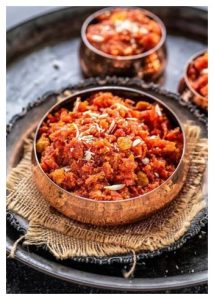
Modern Contributions
The Memons of Pakistan and India are renowned not only for their remarkable contributions to the infrastructure of these nations but also for their exceptional hospitality and generosity. Known for their philanthropy, the Memon community provides financial support to people in need, offering investment loans and financing charity schools and orphanages.
Traditionally, the Memons have been a mercantile community. With the passage of years, they have increasingly diversified into various professions. However, most of them still prefer joining the family business and contributing to it. One of these is the famous Pakistani Memon businessman Aziz Memon, who has built a business empire worth $100 million in annual revenue. They are also praised for their honesty as brokers. One of the famous brokers of Pakistan, Arif Al-Habib, is also a Memon. According to folklore, it is due to the blessing of the Muslim saint Syed Yusufuddin Qadri that Memons are so successful in their business and trade.
Conclusion
The Memon community stands as a testament to resilience, adaptability, and unity. From their historical roots in Sindh to their global presence today, Memons have contributed significantly to commerce, philanthropy, and culture. Their rich traditions, vibrant celebrations, and culinary delights reflect a heritage worth cherishing. The Memon Day is an international day observed on April 10 by the Memon community around the globe. Internationally, Memon Day is celebrated on the 10th of April every year by the community. By preserving their unique identity and embracing change, Memons are poised to leave an indelible mark on history.





